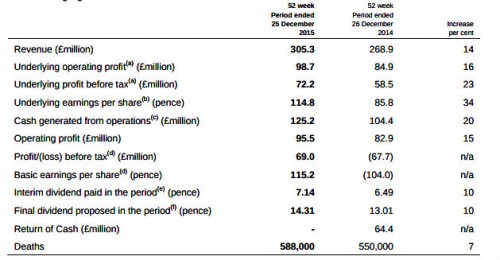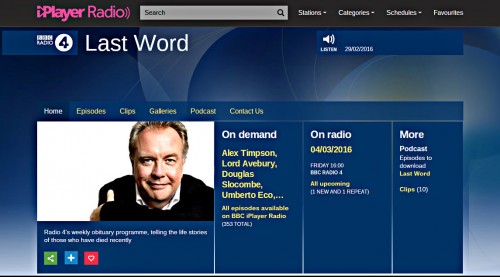Did you know that the term coffin lid applies to a type of surfboard? http://bit.ly/1p2stFW
A much needed new funeral home was opened in Sutton Coldfield by local MP Andrew ‘The Pleb’ Mitchell and NFFD MD William ‘Safe Hands’ Eccleston. The new business has adopted the strapline “here to care for you and your loved ones now and forever”, a reflection, presumably, on the size of its mortuary facility – http://bit.ly/1U1h0nb
In Folkestone a Co-op lim was ticketed by a traffic warden – http://bit.ly/1RBwuZ3
The Guardian wrote about death apps like Everest (above): “Everest is just one of a wave of apps and digital services that are emerging to help millennials plan their own #authentic mortal passings, right down to Instagram-worthy funerals. Last fall, rival apps Cake and SafeBeyond were released within one month of each other, and both hope to streamline end-of-life planning into one simple app.” – http://bit.ly/21W1duC
If you were sealed alive in a coffin you’d last about an hour, new research shows – http://bit.ly/1R9qLiJ
A Hampshire woman died aged 104 in the house she was born in and which she had lived in for her whole life – http://dailym.ai/1Xff6NP
Staff at Taunton Deane crematorium took a tough line with memorialised grave: “The memorial was placed without the necessary permit or permit fee being paid, and without the grave owners’ permission. Therefore the crematorium staff removed the memorial.” – http://bit.ly/21l3idS
Times columnist Janice Turner had a chat with her florist: ‘She told me of a woman who every day had to take a loaf of bread to her difficult mother. It was always wrong: burnt, stale, too soft, too hard. And when she died, the daughter had a floral tribute made of a loaf. The florist calls it up on her iPhone, garnished with Babybels. Its implicit, passive-aggressive message was: “So is this bread OK for you, Mum?”
‘Then the florist beckons me into the back room: “You have to see this.” Her colleague is busy making a wreath featuring a silver ashtray. “Apparently this lady really loved a smoke.” Did she, um, die of cancer? “Dunno. But we’re doing the fag so it lights up at the end. It’s all in the details.”’
Is it good PR for an undertaker to give Easter eggs to a children’s hospice? http://bit.ly/1pzLRux
A US evangelical Christian blog carried this observation about funerals: “Our anti-sacramental impulse isn’t well-suited to an occasion that calls for sacrament. This is an occasion that calls for liturgy and ritual, and those just aren’t things evangelicals are inclined or equipped to supply.” http://bit.ly/1LWgq7u
A man in Utah shot himself dead on the lawn of a funeral home – http://bit.ly/1SFeYYJ
An insurance company that sells over-50s life insurance funded a survey that, among other things, discovered that “family and friends in the UK have spent collectively £4.8 billion on funerals for their loved ones over the last 5 years. And the research shows that to fund these funerals 2.7 million people have taken out some form of finance (credit cards, personal loans and payday loans) spending £1.6 billion.” There are other funeral cost findings in the report – Creative campaign FINAL (1)
The Times warned its readers against over-50s plans: “The problem is if you live an average lifespan you will lose out, paying in significantly more than you get out. Heather Morrice wrote to say that her parents always said that their funeral expenses would be met. When her mother became ill a year ago she was given the plan for safekeeping and was ‘aghast to discover that they would only get a fraction of what they paid in.'” (Article paywalled)
In Puerto Rica a dead man attended his funeral sitting in a chair with his eyes open (pic below) – http://bit.ly/1RginIc
Six in ten people ‘see’ their dead partner – http://dailym.ai/1RfipWT
An Australian woman was charged with burying her mum in the garden – http://bit.ly/21pSmf8
How contagious is a corpse? “Contrary to commonly held beliefs, corpses are very poor sources of contagion. It doesn’t matter whether they are fresh or stinking, bloated, green and covered with mould – http://bit.ly/24YwpZa
A grief app was launched in Canada – http://bit.ly/1nHaUKK
Have a great week.

funerals 2.7 million people have taken out some form of finance (credit cards, personal loans and payday loans) spending £1.6 billion.
Proudly flying the flag of the NFFD




